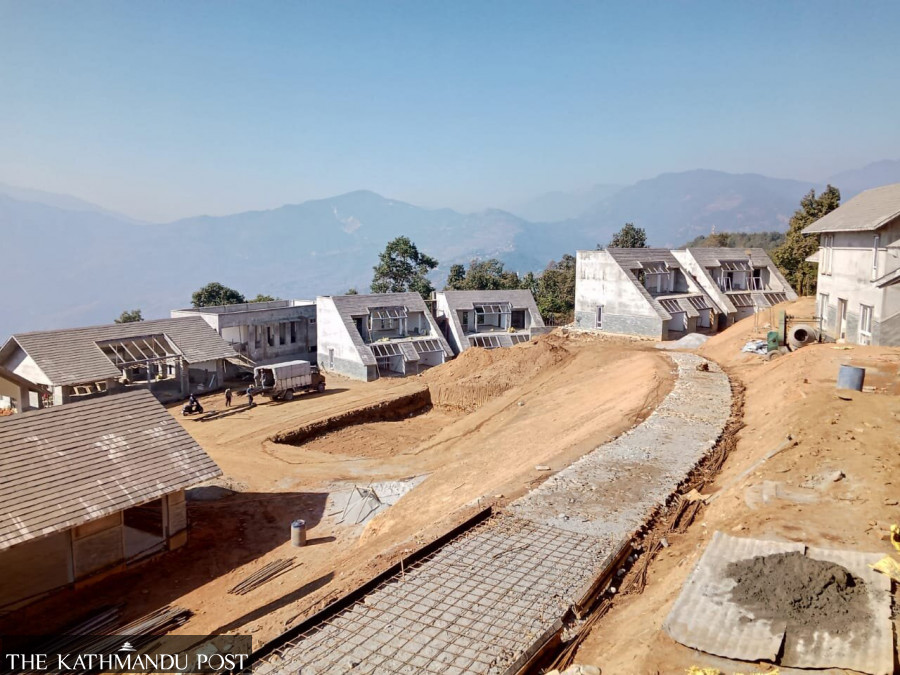Money
Investment pledges plunge as virus, messy politics scare away investors
Foreign direct investment pledges fell 14.81 percent to Rs32.20 billion in the fiscal year 2020-21, officials say.
Krishana Prasain
Potential investors backed away from Nepal in the last fiscal year as Covid-19 ruined travel plans and a tumultuous political season set in.
According to the Department of Industry, foreign direct investment pledges fell 14.81 percent to Rs32.20 billion in the fiscal year 2020-21 ended mid-July.
The investment pledges are in 183 different projects and services. In the previous fiscal year 2019-20, Nepal received investment pledges worth Rs37.80 billion for 223 schemes.
Jiblal Bhusal, director general at the Department of Industry, said investment pledges dropped because the coronavirus prevented travel, and prospective financiers could not visit Nepal to follow up on their investment plans.
A combination of the spill over effect of the first lockdown that began in March 2020 and the second lockdown that started in April 2021 has put investors in a “wait and watch” situation, Bhusal said. “Despite the severe situation, foreign investment pledges in the last fiscal year were good,” he said.
But he added that uncertainty still prevailed. “The new emerging variants of Covid-19 may impact foreign investment in Nepal.”
Officials said that the dissolution of the lower house on two occasions had put national politics into turmoil, and the five-year-old constitution into uncertainty.
On July 13, after months of political wrangling, Nepali Congress Chairman Sher Bahadur Deuba was appointed prime minister following the Supreme Court's order as per Article 76 (5) of the constitution that brought the political tussle to an end.
On Sunday, Deuba won a vote of confidence with 165 members of the House of Representatives voting for him.
China leads the list of foreign investors in Nepal with investment pledges worth Rs22.50 billion in the last fiscal year. But it was lower than in previous years. In fiscal 2019-20, investment pledges from the northern neighbour stood at Rs25.65 billion for 174 different projects.
Investment pledges in the last fiscal year from the southern neighbour India plunged by 72 percent to Rs906 million. The financing commitments are for nine projects. In the previous fiscal year, investment commitments from India totalled Rs3.23 billion for 16 different projects.
According to officials, the figure will jump in the current fiscal year as Nepal recently signed a pact with India’s state-owned Satluj Jal Vidyut Nigam to develop the 679-megawatt Lower Arun Hydropower project in eastern Nepal.
The $1.3 billion project, the single biggest foreign investment project as per 2017 cost estimates, is located in Sankhuwasabha and Bhojpur districts.
This is the second mega project undertaken by the southern neighbour after the $1.04 billion 900-megawatt Arun-3 hydroelectric project on the Arun River.
Breaking down the commitments into sectors, Nepal received the highest amount of investment pledges of Rs18.31 billion in the tourism sector, according to the department.
The investment commitments are for 101 tourism projects and almost all of them came from China. Similarly, 19 foreign investment pledges valued at Rs2.86 billion came in the manufacturing sector and 41 pledges amounting to Rs5.98 billion came in the service sector.
“Foreign investments in a landlocked country like Nepal are comparatively low compared to other countries having access to the sea as the investment cost is less there,” said Bhusal. “Potential investors compare the investment facilities provided by China and India with the incentives available in Nepal, and our country obviously lacks attractive offers to give to them.”
The one-window policy needs to be made effective, and Investment Board Nepal also needs to be more proactive, he added.
According to a new regulation issued under the Foreign Investment and Technology Transfer Act, foreign investors in Nepal need to bring 70 percent of their proposed investment before beginning operations, and the rest in the next two years.
One of the major sources of bridging the financing gap is foreign direct investment, but Nepal is among the countries attracting the lowest amount of investment in recent years, according to the Systematic Country Diagnostic Report published by the World Bank in February last year.
The multilateral funding agency said that foreign direct investment averaged just 0.2 percent of the gross domestic product over the last decade, which is one of the lowest in the world.
Foreign direct investment is vital for accessing new technologies, business practices, and markets. In the past few years, capital inflow in the country has seen an upward trend, but it still lags behind most South Asian countries.
To facilitate foreign direct investment in Nepal, the central bank introduced the Nepal Rastra Bank Foreign Investment and Loan Management Bylaw 2021 which freed foreign investors from having to take its prior approval to send or remit foreign currency to Nepal after getting approval from the foreign investment sanctioning body, said Bhusal.




 5.81°C Kathmandu
5.81°C Kathmandu















